HOME | ABOUT US | MEDIA KIT | CONTACT US | INQUIRE
HOME | ABOUT US | MEDIA KIT | CONTACT US | INQUIRE
At the Forefront of Regional Health
The standard definition of a hero is someone admired for demonstrating courage. But there’s more to the definition: It also applies to someone admired for noble qualities. So it’s no misuse of the term to bestow that title on the 21 individuals you will meet in this installment of Heroes in Healthcare.
In this 20th anniversary year, more than 400 health-care professionals have now been recognized in this annual feature, and in each case, without exception, when we learn about their backgrounds, their passions for doing what they do, their love for providing patient care, we ask ourselves: Where do they come from? How is a metropolitan area of Kansas City’s size able to produce so many dedicated, skilled and compassionate people—enough to easily fill these positions of honor year after year?
The answers to that can be found in the personal accounts you’ll read for each of these people working in the fields of administration, professional services, nursing, auxiliary services, lifetime achievement and volunteer roles. Their examples, indeed, mark them as Heroes in Healthcare.
So let us introduce you to a broad spectrum of people who are working hard at every level of clinical health care—from the administrative ranks to the ranks of medical professionals and those who have invested their lifetime contributions to their organizations and to their patients.
These are the people who make health care exceptional in the Kansas City region, and to each of them, a debt of gratitude is owed.
Administration
Auxiliary Staff
Nursing
Professional Services
Volunteers
Lifetime Service
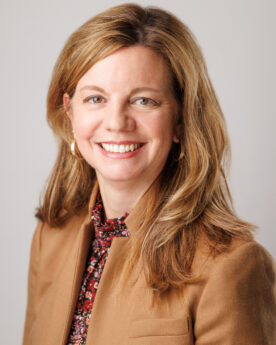 Amy Castillo, AbilityKC
Amy Castillo, AbilityKC
The call to serve and to provide entrepreneurial leadership ran strong through Amy Castillo’s family as she grew up in rural Missouri— her grandfathers, brother, and father, have decades of law enforcement contributions to community development. “Service and building communities is at the core of our family,” says the CEO of Ability KC, a leading comprehensive outpatient medical rehabilitation facility in Kansas City. “The core of my career, in line with my family’s, is centered upon building relationships and partnerships in the communities where we live.” Castillo was an exercise science and psychology major at the University of Missouri who went on to earn a master’s in exercise physiology from Baylor University, then her MBA, with emphasis in human resources and marketing from the University of Dallas. After working in direct patient care and leadership roles in health-care settings in Texas—including her own management and consulting group—she came back to the Kansas City area. She signed on with Cerner Corporation in 2007, eager to explore ways that technology innovation would drive healthcare going forward. She then took on leadership roles at Viracor-IBT Laboratories (now Eurofins Viracor) and HCA Midwest Health before joining Ability KC in 2016. That wasn’t long after the Rehabilitation Institute of Kansas City had merged with Children’s TLC; a year later, she was overseeing the organization and working with a leading team of experts in medical therapies, education and workforce development. Ability KC serves over 3,100 individuals annually, who are living with disabilities, facing challenging conditions or recoveries from illness or injury, including strokes, spinal cord and traumatic brain injuries and amputations. What defines Ability KC, she says “is the culture and team of experts that provide person-centered services, improving access to necessary care, education and work-force development, building bridges between health care and quality of life.”
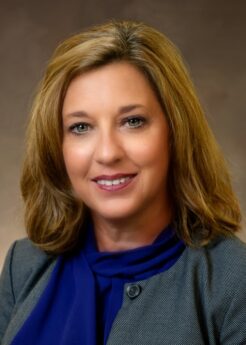 Karen Orr, Providence Medical Center
Karen Orr, Providence Medical Center
Law school? Maybe. Accounting? Definitely a possibility. But Karen Orr found her true calling while she was taking night classes at Kansas City Kansas Community College. “I went to work for a large multi-specialty clinic in Wyandotte County,” she recalls, and “it was here that I met the person that would eventually become my nursing mentor. She, along with my family, provided the support and encouragement I needed to take that leap.” During her final clinical rotation, Orr says, she was assigned to the sixth floor at Providence Medical Center, home to patients in the oncology, joint and spine units. “I knew from my first day of clinicals that this was the place I wanted to be, I had found my forever home,” she says. “The staff on the sixth floor were all so amazing, I wanted to grow up and be just like them!” Through her educational evolution from RN to MSN to MBA at North Dakota-based University of Mary, Orr developed skills that led her to administration. “I had no intent of ever leaving the patient-care area,” she says, but when a chief nursing officer left unexpectedly, the CEO came calling. “I’m not sure I would have accepted the offer had he not said to me, ‘Our hospital needs you to do this.’ Providence had given me so much for so many years, I felt this was an opportunity to give something back, so I accepted. Upon his retirement, that same amazing CEO told me that it was time for me to take on the CEO role, so here I am.” The 221-bed medical center she oversees is a $550 million enterprise that recorded nearly 5,700 patient discharges last year. Not exactly suburban, not exactly urban, Providence serves a challenged population in western Wyandotte County. “We do serve a challenged population, but these are the people of our community … and they need us to be here and to care for them,” she says. In doing so, she has found something more meaningful than just a career. “Providence is my home, and the staff here has become my family over the years.”
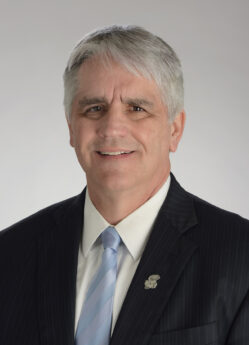 Roy Jensen, University of Kansas Cancer Center
Roy Jensen, University of Kansas Cancer Center
Roy Jensen has propelled the University of Kansas Cancer Center to national prominence through a mixture of vision, determination, collaboration and salesmanship. But don’t overlook his very wry sense of humor. Exhibit A: “I picked medicine because I loved the science and nothing else really appealed to me, besides basketball,” he says. “Medical school was my plan B. I was going to be an NBA lottery pick.” Google, alas, has made it immeasurably harder for Jensen to pull anyone’s leg—the NBA lottery began a year after he earned his M.D. from the Vanderbilt University School of Medicine. The cancer center, before merging into the University of Kansas Health System, drew him here from Tennessee with a career-defining challenge: Make this one of the nation’s leading centers for cancer research and treatment. That was more than 20 years ago, and while he’s been overseeing administrative affairs there, he’s also been behind an unprecedented fundraising effort in these parts. It took a decade, countless hours and millions of dollars, but the center achieved a key goal in 2012, with designation as a national cancer center from the National Cancer Institute. It took another decade for Comprehensive Cancer Center status, which his team earned last summer. That work has been transformative for the region, but it wasn’t exactly the career he’d envisioned. “OMG, No! I like to tell people that I have become a fully-differentiated USELESS administrator (particularly when other administrators are in the room),” Jensen says. “I have never in my career seen anyone who wanted to be an administrator from the get-go who was worth a plug nickel. I firmly believe you have to know the ropes before you can effectively lead, and that you decide to be a leader when you come to the realization that everyone around you is telling you that for the good of the organization you need to step up to the plate.” Last year’s prize isn’t the end of his goals: “NCI Comprehensive status is just a mile marker,” he says. “KUCC’s journey won’t be over until we are widely considered one of the best cancer centers in the world and we can prevent or cure every cancer.”
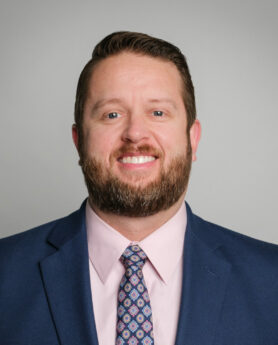 Chris Buesing, Stormont Vail Health
Chris Buesing, Stormont Vail Health
Health care is replete with stories of personal sacrifice made by providers, nurses, staff, and administrators. Not many in the profession have paid the price for their commitment at the level Chris Buesing has. Five years ago, in a Stormont Vail facility, a complete stranger beset Buesing, striking him in the face and breaking his jaw. The fracture required his mouth to be wired shut for six weeks, then for eight more after doctors had to rebreak the bone to improve the positioning. Then came two years of braces to realign things. So he understands how workplace violence can instill feelings of depression, fear, and a constant feeling of anxious alertness in patients and staff. Since that day, he’s made addressing those fears a central part of his job at Stormont Vail Health, where he’s director of worker’s compensation and workforce safety. “When I talk with health-care workers about workplace violence, I remind them that, for the most part, patients and visitors are coming into the health-care setting due to a traumatic or painful situation—in a hospital, patients and visitors are already full of emotions,” he says. “Before I got into health care, I did not understand that this is the experience every day and all day for health-care professionals.” The public, he says, may see a nurse, doctor, therapist, or medical technician but will usually have no clue about the experiences of those staffers: Some may have been yelled at, spit on, or punched by someone they are trying to help. “The other side of that is, even after dealing with this over and over, health-care workers still come back and do their best each and every day to help others,” Buesing says. “It’s hard to fully grasp this reality until you experience it or see it first-hand—so I think talking about it and education is important for everyone to get involved in the conversation to improve these challenges that happen every day all across the country in health care.”
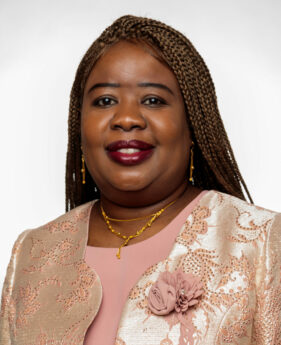 Susan Oweti, University Health
Susan Oweti, University Health
An increasingly diverse nation implies linguistic barriers, and there are few situations where running into those challenges can have worse outcomes than in health care. Susan Oweti is standing watch to see that communication challenges don’t interfere with patients’ needs. She holds the title of cultural health navigator for University Health, where she was recently part of a multi-disciplinary team that formed the One World Pantry, an on-site resource for patients living with food insecurity. Her charge is no small undertaking: She started at the hospital in 2006 as a medical interpreter and is now part of a team that responds to about 165,000 interpreter requests each year. That experience gave her insights into other patient needs, leading to her involvement in creating and filling the role of navigator. In that capacity, she helps improve social determinants of health by screening and assisting immigrant, refugee, and non-English speaking patients. The hospital says that just two years after it was established, the program has provided guidance for more than 6,500 unique patients. “My favorite part of the job is to wake up every morning knowing that I am going to make a positive impact in someone’s life and give them hope,” Oweti says. “I have a lot of patient stories I can share with you.” She’s a native of South Sudan, but her childhood as the daughter of career diplomats was marked by travels through different countries and cultures—Russia, Sudan, Kenya, Uganda, Canada, and the U.S. She’s firmly settled in Kansas City and holds dual citizenship in the U.S. and Canada. In addition to her translation services—she speaks five different dialects of Arabic alone—she’s part of a team at the pantry that serves as many as 50 families a day, offering fresh produce and to date has distributed more than 30,000 pounds of food.
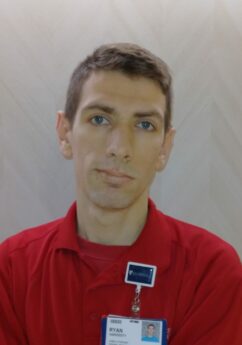 Ryan Hardesty, The University of Kansas Hospital
Ryan Hardesty, The University of Kansas Hospital
When Ryan Hardesty started working at The University of Kansas Health System five years ago, there was an undeniable familial quality to the experience. On one level, that’s because his mother was working there, too, and since then, two sisters and a brother have joined the staff that supports hands-on providers in a thousand ways that often go unnoticed. Ryan’s dominion therein is with the transport team as a patient greeter. His is often one of the first faces patients see when they arrive—a time when many are stressed and, occasionally, emotional. For almost anyone outside the maternity ward, hospital admission is among the darker days of their lives. “I ask the patients where they’re from and also ask them what their favorite hobbies are, and after that is all said and done, I make sure they have a great day when they leave,” Hardesty says. “Talking to new patients and telling every good thing about the hospital and helping new patients to the best of my ability,” is his favorite aspect of the job, he says. His bosses say the impressive part of Hardesty’s work ethic is his unfailing desire to own his role. He is often the first person a patient and family meet when they drive up to the entrance of the hospital, and he quickly works to assess the patient’s need for assistance and provides a wheelchair or an arm to lean on while walking if needed. On the back end of a stay, Hardesty is frequently the last person patients and families encounter after discharge. “The thing that inspires me every day is to improve myself by challenging myself to be better than the day before and to be better the next day,” Hardesty says. His pinnacle experience? “Probably the best would be seeing the one where someone got a a second chance at life,” he says, “That’s what drives me to be the best worker I can be here until the day I retire.”
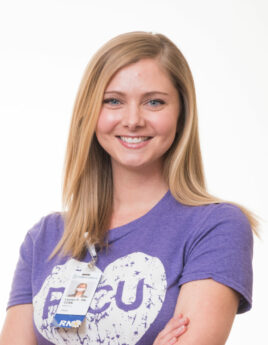 Lauren Plummer, Children’s Mercy Kansas City
Lauren Plummer, Children’s Mercy Kansas City
“Some of life’s most authentic moments,” says Lauren Plummer, “come from difficult situations.” And she should know: She’s a nurse in the cardiac intensive-care unit at Children’s Mercy Hospital, where every day brings some measure of hope, healing and, occasionally, heartache. “When you are dealing with life and death, you see the good, bad, and ugly,” Plummer says. “It creates a strong bond between you, your colleagues, the patient, and their families. It can be difficult knowing the long road many of our patients face, but it is very rewarding when you can help during desperate times. I am honored these families trust me.” Plummer is a native of Wichita who seems to have had a medical calling in her DNA. “My entire family is medical,” she says. “My father is an optometrist, my mother is an RN, and both of my siblings are physicians. By setting the example of caring for others, my siblings and I followed suit.” Not until nursing school did she realized something was missing during adult clinical rotations. “I did my practicum in the pediatric ICU and fell in love,” she says. “You care not only for children but for their families. The population itself requires specialized and individualized care; it feels personal.” Plummer says she was especially connected to “my first patient that I saw through multiple surgeries, difficult times, and eventually had to say goodbye to. I spent many nights rocking the baby and holding the family at the bedside. I knew this patient population was special.” Her level of compassion and care earned her one of the hospital’s Daisy Awards; years ago, she had cared for a young boy who didn’t survive, but the patient’s brother never forgot what he had seen. “Fast forward to this past year when I was withdrawing on a patient,” Plummer says, and the colleague “pulled me aside to tell me that he chose this career because of me. He is now the most wonderful cardiac APRN! I know what I do matters, but this was a reminder that we do make a difference, even on a ‘normal day at work.’
 Patricia Conley, Research Medical Center
Patricia Conley, Research Medical Center
Nursing school can teach you the role that kindness, fairness and compassion play in a model health-care provider. It’s better, though, if you start your first day of classes with those values engrained. “I feel like I had wonderful parents,” says St. Louis native Patricia Conley. “I think they gave me a strong foundation of values, and they inspired me to achieve goals in education and whatever career I chose.” The choice started to come into focus when she was able to serve as a candy striper at a hospital there. “You could volunteer at that time and really do stuff,” Conley says. “They had me in ICU feeding patients—you couldn’t do that today. I transported patients; it was pretty incredible.” Drawing on the experiences of her youth caring for grandparents, she made the commitment to nursing. “I always felt it was a privilege and honor when you enter someone’s personal space to help them feel the best they can,” she says. “I had that sense of fulfillment.” After nursing school at Saint Louis University, she worked in Chicago before coming to Kansas City in 1990 and later earning a doctorate in nursing. She’s been with Research for nearly 17 years, serving now as a clinical nurse coordinator. “I really like the fast pace, figuring things out, being around people,” she says. “I love the staff and like to learn all the time.” Her administrative functions, she says, “gave me this bigger vision, a larger platform to see what was going on, understand why we’re doing things and what we’re doing. And I feel like I can be a resource for other units.” Her years in nursing are replete with positive experiences involving both patients and staff. “It’s been a composite of all those, teaching and treating,” Conley says. “I really enjoy helping a student who turns into a CNC on another unit, or goes onto being a good nurse elsewhere.”
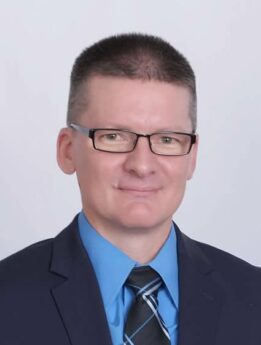 Bret Fuller, St. Mary’s Medical Center
Bret Fuller, St. Mary’s Medical Center
Strange, isn’t it, how a single thought can change a life trajectory? Bret Fuller knows the feeling well. Life, in the form of fatherhood just after graduating from Mizzou, tugged this Springfield native away from plans for medical school, but the caring impulse remained strong, and Fuller settled on nursing. Soon after came The Encounter. “I had some interactions with a patient that I don’t think I’ll ever forget,” he says. “She asked about my career goals as a nurse. When I told her that I was interested in becoming a nurse anesthetist, she said that I was too good with interacting with people and that skill would be wasted in anesthesia ‘because everyone would be asleep!’ I think that conversation had more of an effect on my career path than I ever would have imagined.” For 17 years, he served in the Mercy Health system before coming to the Kansas City area, first with St. Joseph Medical Center, and now St. Mary’s. That came after the deeply spiritual Fuller was in church a decade ago, listening to a pastor describe a new church being formed here. “I felt prompted by God to pull up stakes in Springfield and move,” he says. “I really had no idea what would happen, but I was confident that it was the right move because it was from God. I gave notice at work the following day.” Over the course of nearly 30 years in nursing, he’s looked at the ladder and pondered the next rung. “I’ve been in management three different times, and I have always returned to the bedside,” he says, most recently during the pandemic began in 2020. “Many nurses left during that time,” he says. “Some left nursing entirely while others went to independent agencies. It was a very stressful time, and I exited management after nine months. By then we had entered the second wave of the pandemic, and we had a dwindling core staff combined with numerous agency staff. I put in a lot of hours.” But the experience for health-care workers broadly, he says, has served as a catalyst for change in the care professions, and he has found renewed strength thanks to his faith. “If not for my faith in Jesus, the love of my wife and daughters, and dedication to my remaining colleagues and community, I doubt I would be where I am now,” Fuller says.
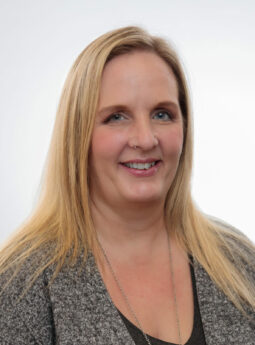 Lorie Hallier, University Health
Lorie Hallier, University Health
The images Lorie Hallier still carries from her youth did not suggest a career in nursing—quite the opposite. “My mom was an ICU nurse who worked nights, and I remember growing up, she was always tired. Honestly, she was very proud of what she did, and dad was proud of her. But I didn’t want to be a nurse.” Fate intervened in the cruelest of ways. Her younger brother was killed in a car accident, and the loss was profound. “That is why I became a nurse,” Hallier says. “I felt that pain—I hadn’t even lost a grandparent yet. The only experience I’d had with death was losing a dog I’d grown up with.” That pain allowed her to tap into the kind of empathy that patients and their families need. “I knew I could be very joyous with those who survive,” Hallier says. “And I could truly empathize with people when they’ve lost someone, and not make it about me, but about them.” Changing career paths also was a source of pride for her father, and Hallier dived in as a new parent, with a husband working two jobs, and taking on part-time ICU work while going to nursing school at Johnson County Community College. “It was hard with a baby and working, but I made it through.” She’s worked at Overland Park Regional, The University of Kansas Hospital and Providence Medical Center along the way, and joined what is now University Health five years ago, helping anchor the surgical nursing unit. “Part of my job is not only caring for a patient, but their family—holding their hands through this major illness of a loved one,” Hallier says. “The hospital is my milieu, but not theirs—they don’t want to be there and they need that compassion and empathy through that time.” Compounding that challenge since early 2020 has been the pandemic, which Hallier says brought on “a terrible time. I can’t tell you, from my heart especially, how hard it was to watch people lose someone they loved and not be able to be with them, watching through the glass or sometimes not even being on the unit. I can’t tell you how many times I came home and just cried.” If someone is able to say goodbye to a dying relative—something she couldn’t do with her own brother, “that’s the way you properly, as a human being, are able to accept a death,” she says.
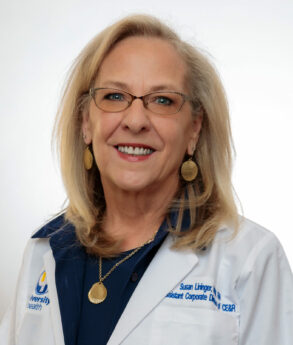 Susan Lininger, University Health
Susan Lininger, University Health
If caring for trauma patients is what inspires you to be a nurse, you’ll want to work where the action is. For Susan Lininger, a St. Joseph native not long out of nursing school, that would be Kansas City’s General Hospital. Not familiar with that, you say? That’s because it hasn’t operated here since its successor, Truman Medical Center (now University Health) opened on Hospital Hill in 1976. Lininger started in the emergency room there, and after finishing nursing school moved to surgical intensive care for nearly a decade, then shifted gears. That put her in neonatal intensive care, tending to the tiniest patients, for roughly 10 more years. At that point, she moved up the ladder as assistant corporate director of clinical education. “I love what I do,” Lininger says. “It’s not always glamorous, but I find satisfaction in it. It’s so rewarding.” Across that 50-year span, she has cared for patients directly at the bedside, and impacted the care of so many more by educating nurses. Her first steps into the field came as a candy striper at her hometown hospital, and there, she says, “I found my passion of helping people and knew immediately that I wanted to be a nurse.” The beauty of her field, Lininger says, “is there are so many career paths within health care. I have had many opportunities afforded me. Much of my focus now is on new hires, new graduate nurses, and keeping our staff current with advanced skills and knowing who their resources are to support them. The passion and commitment that have always been trademarks of successful nurses, she said, helped embrace innovation in care when the pandemic beset the world in 2020. “Now we need to rebuild our foundation and core values; focusing not on the problems, but the possibilities, opportunities and resilience,” she says.
 Dawn Wheelhouse, North Kansas City Hospital
Dawn Wheelhouse, North Kansas City Hospital
Growing up in various hamlets across the Canadian province of Ontario, Dawn Wheelhouse had an early influence that steered her toward a career in nursing. “I always wanted to be a nurse, even in kindergarten, and I think I got that idea because my older sister wanted to be a nurse, and I wanted to be whatever my big sister wanted to do.” There was just one small hitch in that plan: Her sister went off to nursing school—and didn’t like it. “I thought, ‘What if I don’t like it!” Wheelhouse recalls. Turns out, she did. “I love being able to make a difference in someone’s life,” she says, “knowing that you’re part of that care team that spends quality time with a patient and making them better.” She began her career in Canada, but the national health-care system began laying off nurses in large numbers 30 years ago. Wheelhouse was recruited by a small community hospital in Poplar Bluff, and came to Missouri at that level before arriving at Saint Luke’s as an orthopedic unit nurse, taking on additional duties as a charge nurse. The transition to a big-city academic/research hospital, she says, “was definitely a beautiful change, having the resources available and additional knowledge and ability to keep growing in your career,” including leadership classes that would provide entrée into organizational decision-making. From there, she joined North Kansas City Hospital, again looking for new growth opportunities, including duties as nurse manager, responsible for working with multiple care units. Each day, Wheelhouse says, presents fresh validation of her career choice. “When patients come back on campus, or sometimes when we treat their kids or grandkids, some will come up to the floor and say, ‘Do you remember me? You helped save my life,’” she says. “It’s so cool to have them recognize me and thank me and say ‘I’m alive today because of you.’ That’s pretty impactful.”
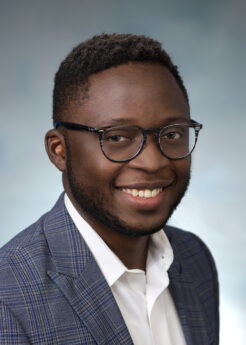 Divine Chi, Olathe Health
Divine Chi, Olathe Health
Pharmacy is not a matter of following a recipe to produce a prescribed compound; a fair amount of detective work can be involved. In that sense, Divine Chi just might be Olathe Health’s Columbo. Consider the case of a patient with an extremely rare hematologic malignancy. “This medication was very new to the market; in fact, it was so new it had yet to be recognized by most electronic medical record systems or insurance payers,” Chi recalls. “Furthermore, it had unusual toxicities that made treatment quite risky. Yet, this patient needed treatment as soon as possible due to the aggressive nature of the malignancy.” Successful treatment, he says, required a great deal of both research and collaboration with providers, nurses, the IT department, and even the pharmaceutical company. “Things can be frustratingly slow and complex in health care,” Chi says, “but this was an instance where everyone did their part, and we all worked like a well-oiled machine to treat this patient. Anytime I have a bad day at work, I think about that experience, and it reminds me of why I do what I do.” He began doing that at Olathe Health as a resident in 2014-15, then came on board as an oncology pharmacist in 2017. Chi is a native of the west-central African country of Cameroon, where he experienced the challenges of limited health infrastructure from a very young age. “When I immigrated to the United States around age 12, I ended up in a diaspora full of various health professionals with similar backgrounds to mine,” he says. “I naturally ended up pursuing health-care as a career because of all this. … I wanted to do something in health care that made a big difference,” Chi says. Making a home and career in Kansas City means he can take advantage of the low cost of living and limited distractions,” Chi says. “It also has good schools. These qualities attracted my parents here, which is how I ended up in the area.”
 Michael Nassif, Saint Luke’s Health System
Michael Nassif, Saint Luke’s Health System
Michael Nassif can tell you about how things change and, in doing so, can come full circle. Take his starting point in health care back in central Iowa, where his father was a pediatric pulmonologist who saw patients at clinics, in their homes, and in the hospital. That was an era when the house-call tradition was fading away, but Nassif never forgot the quality of relationships his father was able to build, getting to know patients, their parents, spouses—even their birthdays. The long journey through his own medical career—he’s a cardiologist by training—came back to that quality of care with his efforts to help Saint Luke’s Health System establish Hospital in Your Home, an innovative program that delivers hospital-level care to patients in the comfort of their own homes. The first of its kind in this region, it combines high-quality, hands-on care with an around-the-clock, virtual-care platform. “A hundred years ago,” Nassif says, “the hospital-in-your-home was the predominant way. Now here we are in 2023, with our technology, turning the clock around and once again putting the patient in the hospital in their own home.” One benefit of the program is the reduced states of delirium and confusion in patients, especially the elderly, whose routines can be upset with hospital admissions. “The single most amazing statistic,” Nassif says, “is that out of 240 patients to date, we’ve had zero who have become delirious or confused. They heal better, and we’ve cut the rate of those having to go back to a nursing home or acute rehab from 15 percent to less than 1 percent.” One case, in particular, he cites involved a woman who had been hospitalized three times in each of the past three years. Getting her into the Hospital in Your Home Program allowed various provider silos to come together in new ways, adjust her heart and kidney medications, and even diet to begin restoring her health.
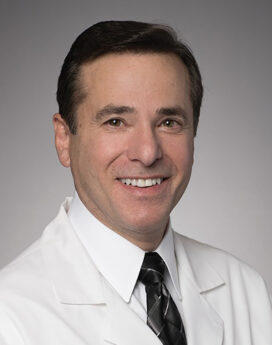 Roger de la Torre, Menorah Medical Center
Roger de la Torre, Menorah Medical Center
It’s almost hard to tell with Roger de la Torre: Is he a bariatric surgeon who also invents medical devices, or is he an inventor who specializes in bariatric surgery? Right now, we’re betting on the former—after all, even de la Torre isn’t sure just how many patents he’s earned in his career. “The highest number I’ve heard is 74,” says the Menorah Medical Center based physician. “A lot of those patents were licensed or sold to various companies, like Johnson & Johnson, Medtronic and Intuitive, the robotics company.” That success from the inventor’s bench has allowed de la Torre to extend his reach to patients worldwide. “That’s what I find to be the most rewarding thing about the whole experience,” he says.“The patent that I might like the most, not that you can like one more than another, but the one I think was very impactful is a product for using your hand in laparoscopic surgery. After that came out, more people became willing to donate a kidney to family member or friend because the incision was going to be very small, you didn’t have to be in the hospital as long, and could return to your activities sooner.” Born in Havana, Cuba, to parents who were both lawyers, de la Torre spent most of his youth in Indiana, then went to Notre Dame expecting to follow their lead before switching gears late in that process. He gravitated to surgical disciplines, but it would be a natural evolution: “I’ve always enjoyed fixing things, taking things apart and putting them back together again,” he says. “A lot of times, if an appliance broke around the house, my dad and I would take it apart and try to fix it.” Sometimes the needed tools were immediately available, sometimes not—which meant fabricating solutions, planting the seeds for his interest in new devices. His voyage of discovery has also included roles in developing new procedures that have dramatically changed outcomes. Working with partner Dr. Steve Scott on a minimally-invasive surgical technique, “we realized that a surgery that we were doing to treat morbid obesity actually reversed Type II diabetes—and not 10 or 20 percent of cases, but roughly 85 percent of the time,” he says. “For the first time, you could be diagnosed with Type II and it wasn’t a lifelong disease that may end up one day taking your sight, your kidneys or your legs. It could be reversed, in most cases. Our unique method to perform that procedure became the most popular way of doing that surgery, reversing something that at one time was considered incurable .”
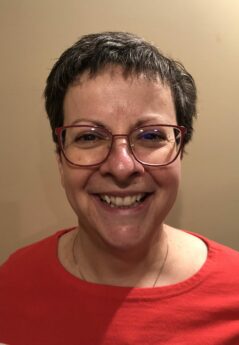 Hope Anderson, The University of Kansas Hospital
Hope Anderson, The University of Kansas Hospital
Hope Anderson knows well that the healing power of medicine can go far—and, perhaps, just a little farther when a spiritual element is mixed in. The volunteer chaplain with the University of Kansas Cancer Center frequently feels that power as she helps patients through some of the darkest days of their lives. But the dark, at times, parts to let a light shine in. “Several weeks ago, I was in the cafeteria eating lunch,” Anderson says. “Two women came and sat with me. As we talked, I learned that the women were sisters. One had recently been diagnosed with a very aggressive form of cancer and her sister, who was visiting from out of state, was helping to take care of her.” Anderson asked if it would be all right to prayed with them; they agreed. “I knelt on the floor between them and prayed with a hand on each of their shoulders,” Anderson recalls. “After I finished praying, I remember thinking ‘this is why God has placed me here.’” As for the two women? “Both had tears in their eyes and big smiles on their faces as we hugged each other goodbye,” she says. “I haven’t seen them since that day, but I still think about and pray for them.” Anderson began as a chaplain intern, then chaplain resident, on the medical center’s main campus. “I first became aware of the KU Cancer Center when my mom was diagnosed with breast cancer and chose to come to KU for treatment—I’m happy to report she has been cancer free for over two years,” Anderson says. Volunteering in this way, she says, “gives you an opportunity to serve; sharing your time and talents. Most organizations are delighted to have volunteers and they offer flexibility in terms of scheduling and time commitments. I cannot predict what you will get in return for your investment, and it is not wise to go into volunteering with an expectation that you will get something in return. However, with that being said, I guarantee that you will be blessed.”
 Marie Marley, Kansas City Hospice & Palliative Care
Marie Marley, Kansas City Hospice & Palliative Care
After 35 years as a grant writer, Marie Marley was looking for something meaningful to do when she retired a decade ago. She found more meaning than she could have imagined. “My life partner, Ed Theodoru, had Alzheimer’s,” she says, so it was only natural to focus on Alzheimer’s patients at Brookdale Senior Living’s Clare Bridge memory care facility in Overland Park. “Little did I know I would receive so much more from these ladies than I could give to them,” Marley says, recalling the relationships she forged there. A few years later, she felt a call to serve at Kansas City Hospice and Palliative Care, and not just for altruistic reasons: This mission would be deeply personal. “I was grappling with my own mortality and thought that visiting these patients could help me as well as provide the patients with a little bit of happiness in their final days,” Marley says. “When I decided to visit hospice patients, I thought it would be depressing, but it was anything but that. The patients and their family members are always so appreciative that I’ve come just to visit with them. I knew when I signed up that they would all pass away after a short while, so I’ve trained myself to develop relationships with them with that fact clearly in mind. Unfortunately, most of my patients die before we’ve had time to develop a close relationship, although there have been a few notable exceptions.” And yet she is able to forge connections where few had been able to before—earning her the nickname The Alzheimer’s Whisperer around the facility. “Everyone wants to be needed,” Marley says, reflecting on her own service. “We all want to feel we’re making a difference in someone else’s life. We could even say it’s a universal human need.”
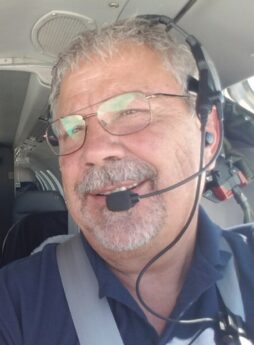 Greg Kaaz, Angel Flight Central
Greg Kaaz, Angel Flight Central
Not long after he first started flying more than 30 years ago, a thought came to Greg Kaaz: “I can come up here and burn a hole in the clouds,” he realized, “or I can use this to do some good.” He’s been doing a lot of good ever since, most of it on behalf of Angel Flight Central, which connects owners of private planes with families who need air transportation to medical destinations but might lack the means to pay for commercial flights. “I guess I’ve been blessed in my life with what the Lord has given me, and I want to return that and share it,” says Kaaz, who owns a construction company in his hometown of Leavenworth and takes on about 15 missions a year in his Cessna Citation. “And I’ve been blessed with the ability to be a pilot, and my health is good enough that I can still fly.” His commitment to serve can be traced back to the examples of his parents, even as they were building the family business, he says. Flying, though, merged two interests. “I get a lot more out of it than the people I fly,” he says. “That may seem a little strange, but when you see how other people are struggling through and you look at your own life, well, I got it pretty damn good.” Sure, he says, he could write charities a significant check, “but I’d much rather give $1,000 of personal service than write a check for $100,” he says. “It just means so much more when you can see who you’re helping and know that you actually are helping.” His long relationship with AFC, with years of board service and leadership, has been fueled by the group’s power to leverage contributions: For every $1 in donations, AFC is able to produce nearly $4.75 in flight services. Of his fragile passengers, Kaaz says, “obviously, the kids are the toughest,” including an energetic, lively youngster he flew years ago for special treatment: The boy had been born with no intestines, and had been fed entirely by tube. “The only thing he had ever tasted was toothpaste,” Kaaz marvels. “To think someone who never had a taste of any food but yet could be so happy—I guess you don’t know what you’re missing if you never had it—but it really makes you appreciate what you’ve been blessed with.”
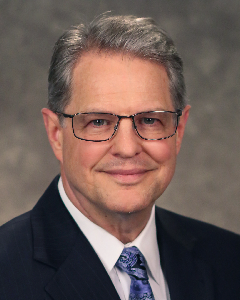 Kent Barr, North Kansas City Hospital
Kent Barr, North Kansas City Hospital
The competitive cauldron that is Rockhurst High School pushed young Kent Barr as both a student and an athlete, and he happily rose to the challenge in classes related to health, biology, and chemistry. When the time came to consider college, one of his football coaches suggested he look into Creighton University in Omaha. “I was the first in my family to go away to college, but it wasn’t like we did grand tours of all these schools—we didn’t have that kind of money,” Barr recalls. But Creighton stepped up with scholarships that got him through his bachelors and the medical school there, setting him on a path to North Kansas City Hospital, where he recently retired after a run of more than four decades treating patients with cardiovascular disease. “One of the reasons I really liked cardiology, and I think it’s less so today, in the day compared to a lot of specialties, we had enough diagnostic tools to figure out what was going on with patients,” Barr says. Innovation in the field, he says, “came in bursts,” as with balloon angioplasty and treatments for acute myocardial infarction. “Rather than put a patient in the coronary unit with pain relief and hope for the best, we actually were going in to treat acute heart attacks. That was groundbreaking.” Making his career in Kansas City was an easy choice: “It was home,” he says, and North Kansas City Hospital was “an ideal situation for me.” He joined a group with four doctors, found a convivial work setting, and stayed for his entire run. “That doesn’t happen today as often as in the old days,” he said. He’ll retain his hospital board seat and cherish the memories of his service. “In general, I’m thankful for the gratefulness and true appreciation that patients have given over the years for the help. It’s hard to put into words. You get to the point where they’re not, well, certainly, they are patients, but it’s more than that. You look forward to seeing them, ask how they’re doing, ask about their families. That bond is what I appreciate the most.”
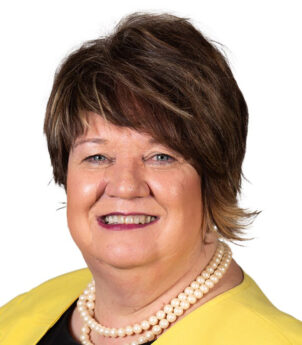 Nanette Houck, Liberty Hospital
Nanette Houck, Liberty Hospital
Nursing was in the back of Nanette Houck’s mind, even as a child, but so was the possibility of growing up to become a lawyer. The transformative moment in her life arrived under horrible conditions: An industrial accident that burned her father—second- and third-degree—over nearly half his body. “He spent three months in the burn unit of a hospital, and many months in rehab,” Houck recalls. “During that time, the relationships, and experiences I had with physicians and staff, helped me realize I wanted to be a nurse. I always have been drawn to helping others and advocating for change and improvement to help make people’s lives better.” She didn’t wait to act on that revelation, taking a hospital job while still in high school, and then through college. “While working as a night nurse, I met several mentors—staff nurses and supervisors—who inspired me. I’ve always been drawn to healing as well as to opportunities that allowed me to help and advocate for others,” she says. She came to Liberty Hospital in 2019 after 31 years up the highway at Excelsior Springs Hospital. In her role as vice president for quality and patient savings, she’s a major driver in the hospital’s award-winning efforts to ensure patient safety. As is often the case in the nurse-to-administrator track, the opportunity to impact more lives formed her career path. “As an administrator, I am in a position to enact positive change,” Houck says. “I am driven to advocate for process improvements to benefit patients. At a Critical Access Hospital, I assumed a role that allowed me to recruit specialists from larger hospitals to come in and serve the community,” and she’s able to focus on quality, safety, risk and outreach at a hospital with more than 200 licensed beds. “One of the greatest compliments I received here was being referred to as a ‘Swiss Army Knife,’ meaning I have experience in such a variety of roles that I can help influence good work across the organization,” says Houck.
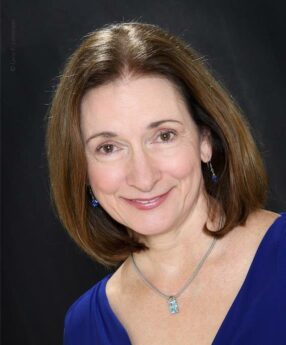 Noreen Thompson, The University of Kansas Hospital
Noreen Thompson, The University of Kansas Hospital
Compassion is always a hallmark of effective caregivers, but that quality can be strained by the circumstances of a hospitalization—especially when mental illness is involved. For more than 35 years as a clinical nurse specialist, Noreen Thompson demonstrated the dignity and grace that are essential virtues for effective care. Retirement recently came calling for Thompson, but the legacy she leaves behind at The University of Kansas Hospital is now part of the culture. Earlier in her career, Thompson recalls, she was paired with a nurse manager by the name of Tammy Peterman to lead a service-excellence committee. Its goal: Changing the culture of a former state-owned enterprise with a spotty history. “This gave us an opportunity to teach large numbers of staff about customer service,” Thompson says. Peterman, now head of the health system’s Kansas City division, and CEO Bob Page have “steered our organization to a place of excellence that I would have never dreamed possible in those days,” Thompson says. “I witnessed and hopefully supported that mission of excellence in service.” Thompson is a Philadelphia native whose parents taught her the value of social justice and service to others. “As a teen, I worked in an orphanage in the summers and met a nun who provided the children’s nursing care; she was another role model.” Catholic-school education reinforced the call to service, and she earned her BSN and master’s at the University of Pennsylvania. After she had moved to KC 40 years ago while starting a family, hospital officials saw a need for a psychiatric liaison, and she was intrigued because it would “focus on bringing psychiatric mental health to the medical inpatients. It included support and education for the non-psychiatric staff. This sub-specialty of psychiatric nursing was a perfect fit for me.” Throughout her career, she says, “my focus has always been on doing the best I can do in the moment for the patient, family or staff .”